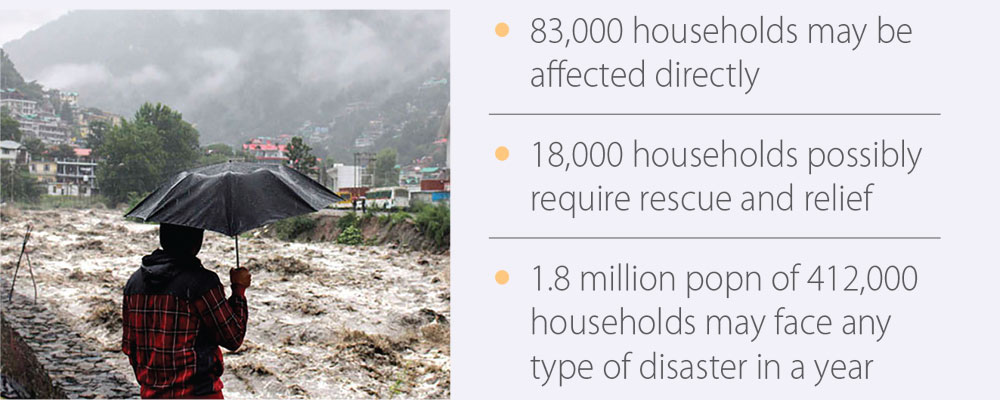
By A Staff Reporter,Kathmandu, June 6: The National Emergency Operation Centre of the Ministry of Home Affairs has established a central command post for monsoon preparedness and response targeting this monsoon season. The command post will remain operational from the beginning to the end of the monsoon. Normally, the monsoon in Nepal sets on June 13 and ends by mid-September or by the first week of October.
The central command post will now handle various preparation and precaution measures for the prevention, relief, and rescue of events to be caused by this season's monsoon round the clock.
The command post will be headed by Dr. Bhisma Kumar Bhusal, Joint Secretary and Chief of the Disaster and Conflict Management Division at the Home Ministry, Chief Executive Officer for the National Disaster Risk Reduction and Management Authority, Anil Pokhrel said on Wednesday.
Under the leadership of Bhusal preparations and response teams will be deployed during the monsoon season.
The central command post was established as per a decision made by the Ministry of Home Affairs on May 30 in the presence of Deputy Prime Minister and Minister for Home Affairs Rabi Lamichhane, according to Pokhrel.
The command post will consist of members (Joint Secretary level) from the Ministry of Communication and Information Technology, Ministry of Health and Population, National Disaster Risk Reduction and Management Authority, Director General of the Department of Water Resources and Irrigation, Director General of the Department of Hydrology and Meteorology, Director General of the Department of Roads, Director General of the Department of Mines and Geology, as well as other members.
Additionally, Brigadier General handling the Disaster Management Department in the Nepali Army, Deputy Inspectors General of Police for Disaster Management of Nepal Police and Armed Police Force Nepal, investigation officer from the Department of National Investigation and Rama Acharya, Under-Secretary and Chief of the Disaster Preparedness and Response Section of the Ministry of Home Affairs, will also be members in the command post.
Similarly, the 23rd meeting of the Executive Committee chaired by DPM Rabi Lamichhane held on June 3 also endorsed the 'National Action Plan for Monsoon Preparedness and Response-2081' and took it up for implementation with necessary amendments.
In the Action Plan, it is estimated that about 1.81 million populations and 412,000 households may be affected in one way or another by the disaster this year. Similarly, it has been estimated that 83,000 households may be directly affected by the monsoon-induced disasters and 18,000 households will have to be rescued and relieved.
According to CEO Pokhrel, the command post will undertake some major tasks like effective implementation of the preparedness and response plans based on impact assessments by
obtaining weather forecast information of a week, three days, and one
day in advance, and immediate dissemination of information about potential risks in various languages (texts) through different communication mediums.
Further, the command post will regularly collect information on disaster events from across the country and immediately inform relevant officials from concerned agencies for prompt response, according to Pokhrel. The command post should also inform the Deputy Prime Minister and Home Minister, Secretary, Executive Chief, and other relevant officials about the events and adhere to direction as needed for response.
The command post should also coordinate with inter-ministerial and relevant agencies for response as needed, act as a centralised unit to address public grievances related to disasters and instant update and enter details of search and rescue materials from various warehouses across the country into the disaster portal.
The post is also given responsibility to hold regular meetings about monsoon preparedness and response command centre after the monsoon begins.
The Ministry of Physical Infrastructure and Transport should arrange at least 35 Bailey bridges (five in each province) in case of any serious disaster to resume road networks.
The Ministry of Energy, Irrigation, and Water Resources should arrange for a minimum of 1,000 gabion boxes in each province (2,500 in Koshi
Province), 25,000 sandbags in each province (50,000 in Koshi Province), and 2,000 portable solar lights in each province.
Further, the command post should direct and request the Provincial Emergency Operation Centre to transport relief materials from the storehouse centres to the districts.












